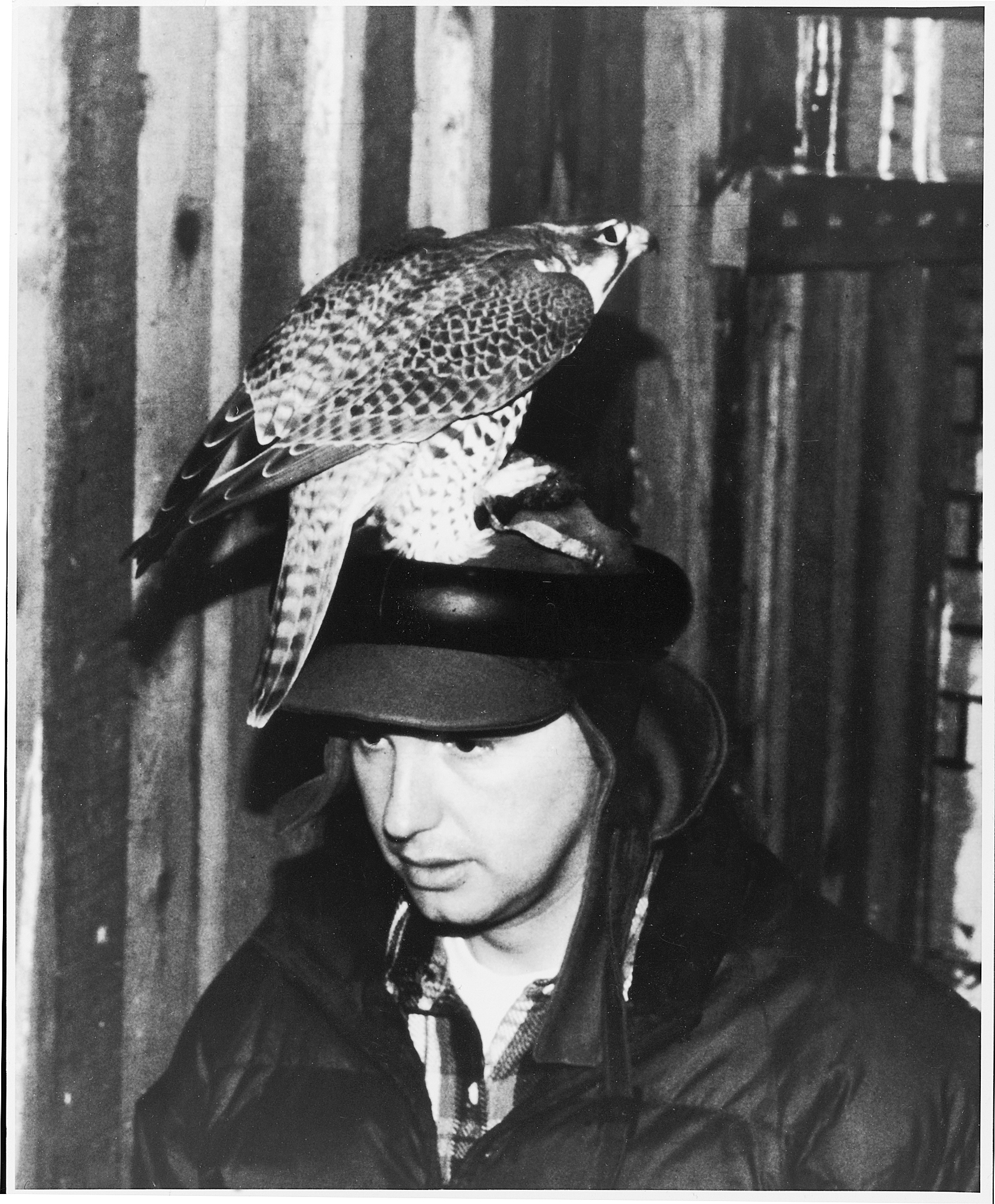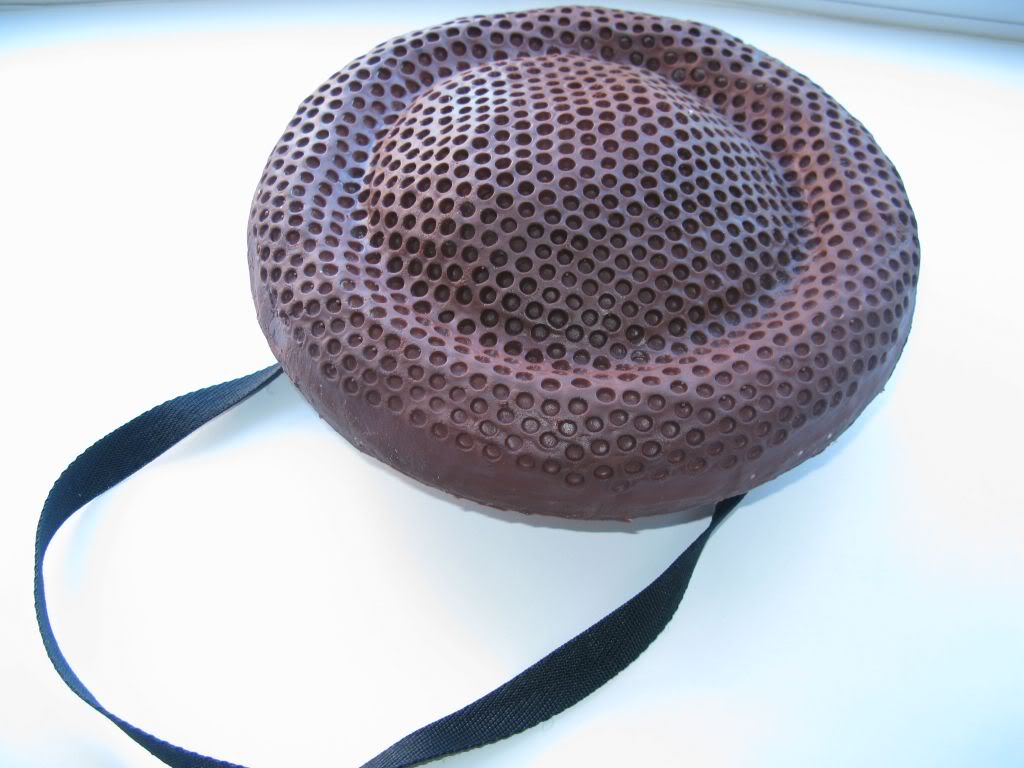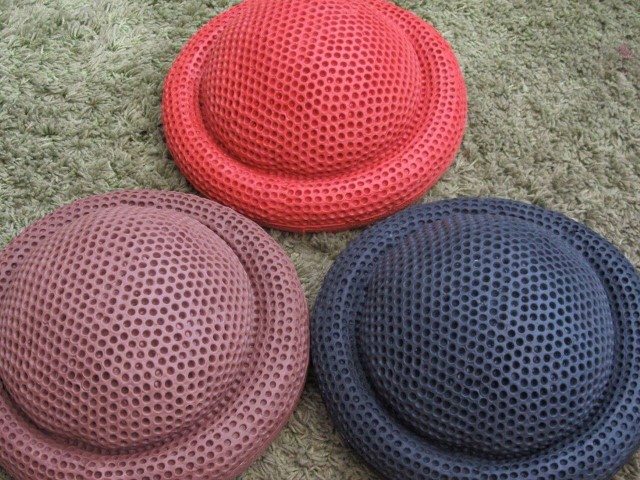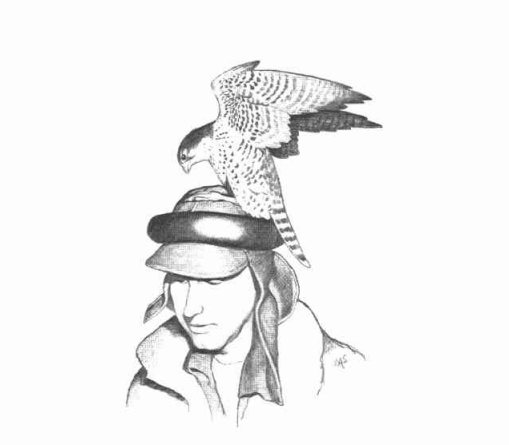How Literal Fuck Hats Saved the Peregrine Falcon
Saving an endangered species, one hat at a time.

Lester Boyd, Inventor of the fuck hat. Photo: Peregrine Fund of Boise, Idaho, 1977
The Peregrine falcon, the fastest animal on earth, was saved from extinction thanks in part to a specially designed hat that proved to be an innovative, if unusual, method of artificial insemination. Essentially, it’s a fuck hat.
In the 1950s, the number of wild Peregrine falcons had diminished drastically due to the reckless and widespread use of dichlorodiphenyltrichloroethane, or DDT. This toxic pesticide didn’t kill Peregrine falcons outright, but it did weaken their eggshells to the point of making incubation unviable. By the 1960s, there were no wild peregrine falcons in North America east of the Rocky Mountains, and only a handful to the west.
Tom Cade, a Professor of Ornithology at Cornell University, is credited with being the first to discover there might be a Peregrine problem. However, it was only after speaking with other experts at a 1968 conference in Madison, Wisconsin, that Cade knew for sure the birds were in danger. To counter the devastation a potential loss of species would have had, Cade and about a half dozen other men formed The Peregrine Fund in 1970. It began in Ithaca, NY, though the organization is now based in Boise, ID. Armed with donated birds from concerned falconers the world over, Cade and a handful of others embarked on the most ambitious captive breeding program in history.
Of course, there were simply too few Peregrine falcons left to leave their recovery to natural propagation. As Mike Garets of The Peregrine Fund says, “A handful of falconers repopulating two or three birds a year was never going to replenish the population.” Instead, The Peregrine Fund had to employ several methods of artificial insemination to ensure the species’ successful and speedy recovery.
“Everyone wants to know the magic formula for success—how to get all eggs fertile, all eggs hatched, and all chicks raised,” writes Tom Cade and James Weaver in Falcon Propagation: A Manual on Captive Breeding. “There is no magic formula, but success is proportional to the intensity of interest, the personal involvement, and the amount of hard work that go into a breeding effort.”
One of those initial intense efforts Cade and Weaver refer to was a manual masturbation technique that requires three adult humans to perform. It’s a three-man falcon handjob, essentially. The first person holds the falcon face down on a foam surface and assures its safety. The second person pulls the falcon’s legs apart, leaving room for the third person who uses their middle finger and thumb to massage the falcon’s papilla and eventually collect the bird’s precious and endangered semen.
There can be difficulties with this approach. Some birds don’t want to be approached and have to be caught in a net and hooded before palpation. Furthermore, it can be extremely stressful to both the falcon and the falconer. What’s more: sometimes this method doesn’t even work.
The second artificial insemination method for Peregrine falcons is the fuck hat.

Image: Ryan Williams
The copulation hat, as prudes might call it, was first designed by Lester Boyd, a falconer from Pullman, Washington, who created the hat in response to the potential extinction crisis of the 1960s. The fuck hat method was soon adopted by The Peregrine Fund and included in Cade and Weaver’s official propagation manual.
To the untrained eye, the hats resemble rubber turbans, or maybe even pith helmets. A “donut” rings the head where the male falcons, or tiercels, perch during copulation. On top is a non-toxic, honeycomb-patterned silicone catacomb structure that acts as the semen receptacle. The fuck hat comes in over a dozen colors, including something called “safety yellow,” and costs around $300.
“We call it the semen hat,” says Brad Wood, a falconer from Olympia, Washington, and the former owner of Northwood Falconry, America’s Foremost Falconry Outfitter Since 1984. “I bring it with me whenever I do falcon education events for the public. I would say about 98% of people don’t know what the hat is used for. It’s an always interesting conversation.”

Image: Ryan Williams
Wood, 63, says there are only a handful of falconers like him out there ‘making a living’ out of breeding falcons this way. Though he has been in this line of work for 25 years, it is anything but routine and even requires daily work in courtship and bonding.
“Breeding falcons this way is very intense. I get more anxious than the birds do,” says Wood. “They only breed from the beginning of March until the end of May and you have to be in there with them on a daily basis… You know, I lead a fairly normal life meaning I have a family. I have a wife. I value my human relationships. It can be difficult to act like a falcon every day for three months. You can’t just casually do it whenever you want to.”
Indeed, a falcon won’t fuck just any old hat. The birds need to be romanced a little bit first. They need to be courted. To achieve this, a falconer must maintain consistency. The propagation manual suggests always wearing the same clothes throughout the breeding season, and that “the [fuck] hat should be worn at all times so the bird learns to accept it as part of your normal appearance.”
Communication is also crucial. Falconers are instructed to mimic the female falcon’s chirp and even bow their head in a rocking motion similar to what a mating female might do. An interested male falcon will then show his interest in a variety of ways, including reciprocating vocalizations, or performing ledge displays. An interested falcon may even take on a frozen body posture of paralyzed anticipation.
When it’s time to make the magic happen, the falconer turns his back to the falcon before kneeling on the ground. A ready bird will then mount the hat, flap its wings wildly, perhaps make a chittering noise, before pressing its abdomen against the hat, and concluding with “a noticeable shudder” during ejaculation.
Afterwards, falconers often reward the birds with a bit of food and end the session with a “chup” vocalization. Once outside of the Peregrine’s chamber, the falconer uses a capillary tube to collect the semen from the hat, maybe only a drop or two, which is then taken directly to a female falcon and deposited into her oviduct using the same capillary tube from the collection.
As truly weird as this sounds, it worked. This totally absurd process, repeated thousands of times over the next three decades, ultimately saved the Peregrine falcons from extinction.
Not surprisingly, Wood gives a lot of the credit to his fellow falconers. “It wasn’t just biologists and public officials,” says Wood. “It was falconers who had a passion who devoted their time and money to make sure the birds would be around for future generations.”

Illustration: Falcon Propagation: A Manual on Captive Breeding
Bob Collins of The Peregrine Fund echoes this sentiment, describing those early days of the program when falconers would hesitantly donate their birds to Cade and the other ‘founding fathers’ of The Peregrine Fund. “Sometimes they would give their only birds, not knowing if they would ever see a falcon again in their lives, all to save the species.”
In the end, the falconers had no need to worry. The Peregrine Fund’s captive breeding program successfully bred and released over 4,000 birds back into the wild. In 1999, the Peregrine falcon was officially removed from the Endangered Species List. The raptors have since repopulated almost all of North America, including a few unlikely places, such as New York City, which is home to at least 50 peregrine falcons, the most per square mile of any place on Earth. The fuck hats worked.
Humans very nearly lost Peregrine falcons through years of fucking over nature. It seems all that was needed to save the species, though, was to let nature fuck a human.
